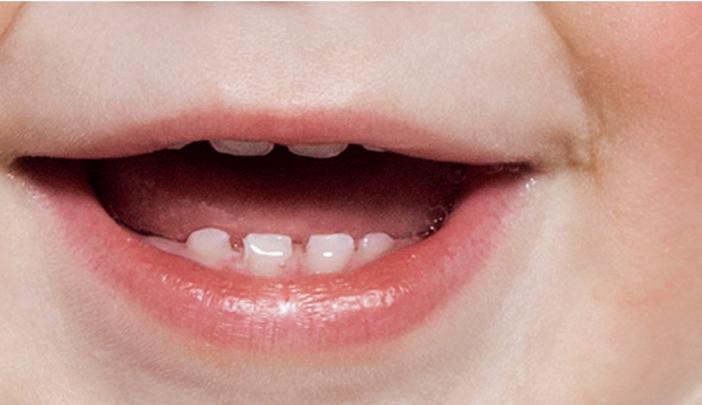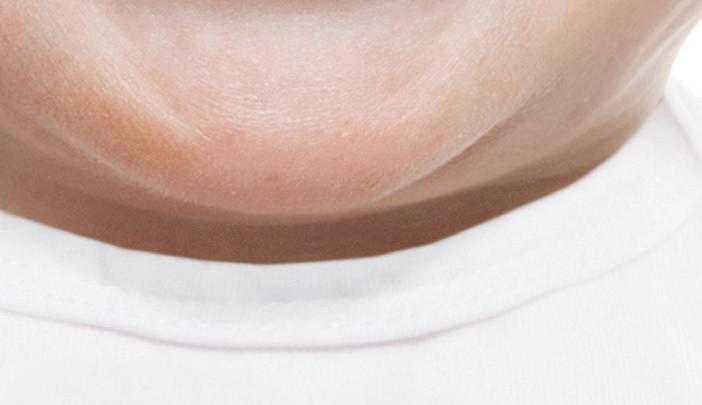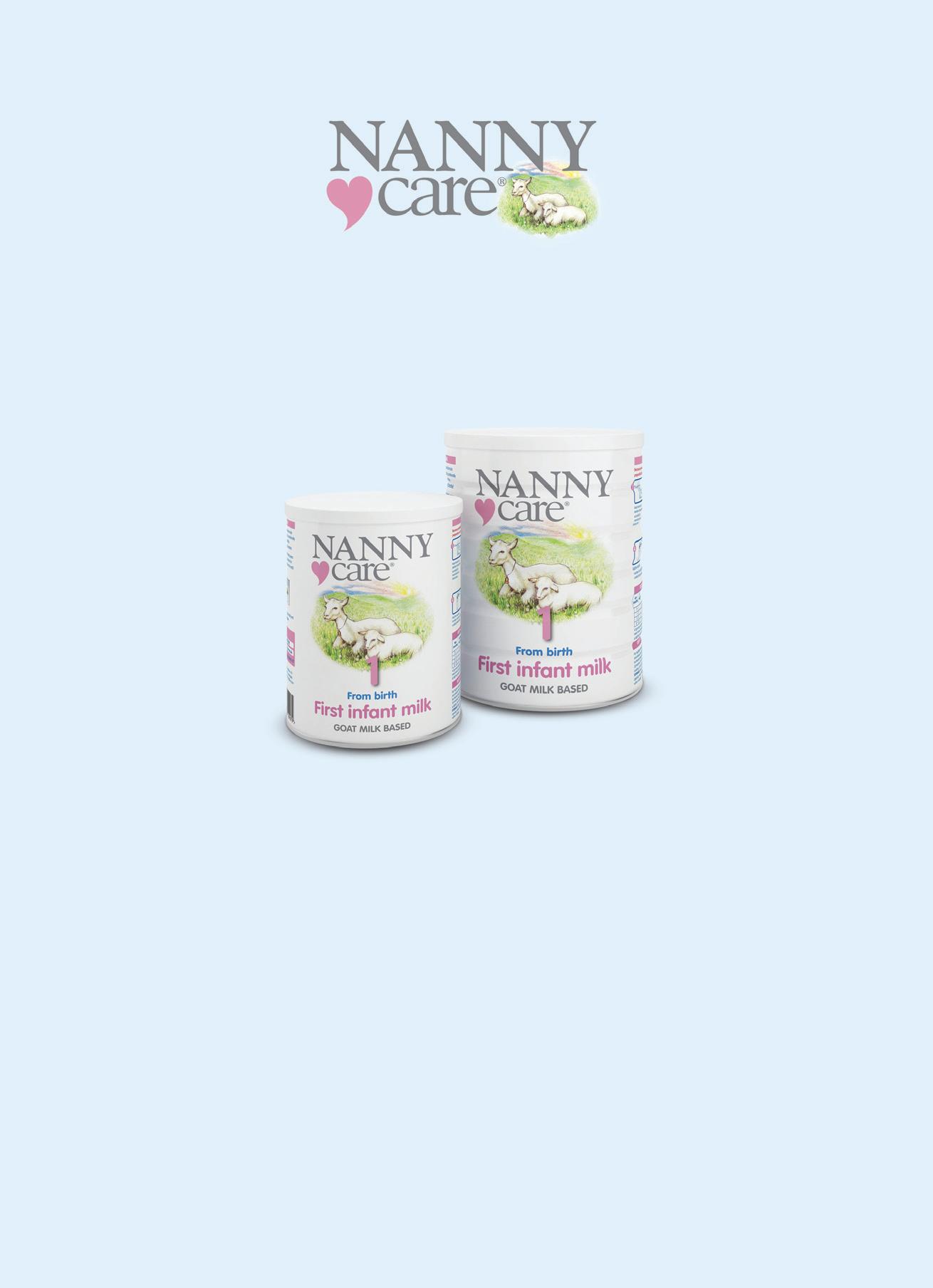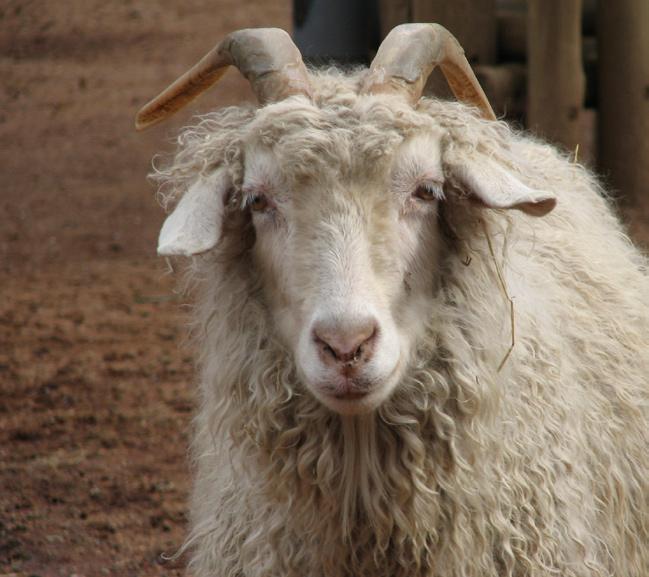
23 minute read
Cows’ milk protein allergy
dr rosan meyer, Paediatric allergy dietitian, Honorary lecturer, imperial college london
Dr Rosan meyer is Principal Research Dietitian within the Gastroenterology Department at Great ormond Street Hospital. She is also Research and education manager of the Food Allergy and Intolerance Specialist Group of the BDA. Rosan’s areas of expertise include food allergy with special interest in children with food allergies who also have feeding difficulties.
Advertisement
For full article references please email info@ networkhealth group.co.uk
cowS’ mIlK PRoTeIN AlleRGy GUIDelINeS: IS THe meSSAGe GeTTING THRoUGH?
Cows’ milk protein allergy (CMPa) has been shown to be the most common food allergy in infants and young children and, therefore, healthcare professionals need to know current management guidelines to optimally treat children with this allergy.
Several guidelines have been published to help healthcare professionals not only to identify symptoms, but also to guide maternal elimination diets and suitable hypoallergenic formulas for prescription. However, are the messages of these guidelines getting through and are we getting better at the diagnosis and management of CMPA?
CMPA can present as either immunoglobulin E (IgE) or non-IgE mediated allergy.1 The main distinctions between these two types of allergy is whether IgE is involved in the pathophysiology and the onset of symptoms. In IgE-mediated CMPA, symptoms occur within two hours of exposure to cows’ milk and nonIgE mediated CMPA symptoms usually set in from two hours and up to a couple of days after the ingestion of cows’ milk.2 In addition to the timing of onset of symptoms, there are distinct differences in the type of symptoms, with IgE-mediated allergy leading to acute skin rashes, facial swelling and in the worst case scenario, cardio-respiratory compromise (called anaphylaxis). Conversely, nonIgE mediated symptoms affect mainly the gastrointestinal tract and skin and can lead to diarrhoea (with/without blood in stool), vomiting, constipation, severe abdominal discomfort and/or atopic dermatitis.3
The recent EuroPrevall data has found that the prevalence of CMPA Europe-wide, based on double blind food challenges, was below 1%.4 From this cohort, the United Kingdom (UK) had one of the highest incidence rates at 1.28%. Following this publication, several researchers have highlighted concerns that the study design may have not adequately identified non- IgE mediated CMPA.5,6 A UK birth cohort study has shown that 2-3% of one- to three-year-olds can be confirmed as having a CMPA, but this still does not adequately reflect the prevalence of non-IgE mediated CMPA. Nevertheless, CMPA has been shown to be the most common food allergy seen in infants and young children and, therefore, healthcare professionals do need to know current management guidelines to optimally treat children with this allergy.
table 1: summary of first line hypoallergenic feed recommendation
Clinical presentation
anaphylaxis aaF
aaF acute urticaria or angioedema mild-moderate eHF severe +/- poor growth aaF eHF
MaP guidelines bsaCi guidelines*
Atopic eczema/dermatitis
mild-moderate eHF severe +/- poor growth and/or breastfed top up aaF eosinophilic oesophagitis aaF if requiring a top up formula when breastfed aaF otherwise eHF
aaF gastroesophageal reflux disease mild-moderate eHF severe +/- poor growth aaF eHF cows’ milk protein-induced enteropathy mild-moderate eHF severe +/- poor growth aaF eHF unless severe in which case aaF
Food Protein induced enterocolitis syndrome aaF aaF
Proctocolitis mild-moderate eHF severe +/- poor growth aaF eHF
* the Bsaci guidelines indicate an aaF formula in any conditions mentioned if food allergies are multiple, growth faltering is present and reactions are severe
current guidelines In the last 10 years, 11 guidelines have been published in the English language worldwide on the diagnosis and management of CMPA.2,7-10 Of these, three are from the UK and include the Milk Allergy guidelines for Primary care (MAP),11 the British Society for Allergy and Clinical Immunology (BSACI) guidelines for secondary and tertiary care12 and the National Institute for Clinical Excellence (NICE) Clinical Knowledge Series on CMPA.13 These guidelines in regard to both diagnosis and management are very similar and provide guidance on the diagnosis of CMPA and the management, including information on the maternal elimination during breastfeeding, calcium and vitamin supplementation and hypoallergenic formulas.
For the diagnosis of IgE-mediated CMPA, either skin prick or specific IgE-testing for cows’ milk provides useful support in addition to the allergy focused history, but in primary care, often these tests are not available and healthcare professionals will require to place the child on a cows’ milk elimination diet until supervised challenges or test results are available to confirm the diagnosis.14 For non-IgE mediated CMPA, there is currently no valid test to guide the healthcare professionals to the diagnosis of CMPA and, therefore, a cows’ milk elimination diet with symptom improvement, followed by deterioration with re-introduction, remains the best method for diagnosis.
As the majority of children present in early childhood with this allergy,15 a cows’ milk maternal elimination diet will be required in breastfed infants. In non-breast fed children, a hypoallergenic formula will be required. A hypoallergenic formula has <1% immunoreactive protein on in vitro testing and should be tolerated by 90% of children with a CMPA (with a 95% confidence interval).16 The MAP and BSACI guidelines both recommend first line choices for a variety of cows’ milk allergic conditions (Table 1). In principle, the guidelines indicate that for the majority of children with mild to moderate IgE/ non-IgE mediated CMPA, an extensively hydrolysed formula (EHF) is appropriate. However, if they have anaphylaxis, faltering growth and/or are exclusively breastfed with symptoms, then an amino acid formula (AAF) is indicated. In addition, if an EHF does not lead to symptom improvement, a trial of an AAF is warranted.11,12 The aforementioned suggestions are well substantiated by published evidence and are in line with international guidelines and the majority of guidelines from other countries.2,17-19
Quality of life for both the family and the child has been associated with symptom severity and foods eliminated and, therefore, is directly linked to optimal dietary management of CMPA.20 Breast milk and/or a hypoallergenic formula contributes to the majority of nutrients in the young infant and, therefore, does not only have an impact on symptoms resolution but also on growth. It is, therefore, important for healthcare professionals to familiarise themselves with formula choices (Table 1).
wHat is HaPPening in Practice? Breast milk remains the best source of nutrition in children, also in those with CMPA and should be promoted as far as possible. A maternal elimination diet may be required, in particular in non-IgE mediated CMPA. Unfortunately, the UK has one of the worst breastfeeding rates in the world, which healthcare professionals need to be aware of and support practice as far as possible.21 This means that the majority of children with suspected CMPA will be on a cows’ milk formula and require intervention using a hypoallergenic formula. In 2010, Sladkevicius et al22 found that on average it took 2.2 months before infants with suspected CMPA were prescribed with the first clinical nutrition preparation and on average it took 3.6 months before the diagnosis of CMPA was made. Since that publication, abovementioned guidelines on how to diagnose and manage CMPA in the UK were published and there was an assumption that this would improve the identification and treatment of children with this allergy. However, a recent study by Lozinsky et al23 indicated that the average time for diagnosis continued to be around 2.2 months according to parents surveyed, and 48% of cases were diagnosed by the GP followed by 21% by paediatricians, 13% by the health visitor and in 5% by a dietitian.
Why has the diagnosis and initiation of suitable treatment for CMPA therefore not improved significantly since the publication of UK guidelines? Could it be that we do have a case of guideline overload, where healthcare professionals do not know which guidelines to follow, or are they confused with the content of guidelines? Many trusts have also developed their own guidelines for feed prescriptions based on local CMPA population and feed contracts. We do, therefore, have a situation where healthcare professionals are exposed to international, UK national and local guidelines, which understandably can be confusing.
In addition, there has been the belief in primary care, that CMPA is rare and that many primary care physicians would not deal with this diagnosis on a regular basis and, therefore, further education on this topic may have not received so much priority. However, in a study by Lozinsky et al,23 in the 12-month period prior to completing the survey in primary care, 52% of the GPs diagnosed ≥3 children with CMPA and 65% managed ≥3 cases already diagnosed with this allergy. It is, therefore, an allergy that most healthcare professionals, even in primary care will be regularly exposed to.
Has the current financial climate contributed to a delay in commencing optimal dietary management? There has been more pressure placed on healthcare professionals to ensure cost savings and that includes evaluating the prescribing of hypoallergenic formulas. A recent review by the National Healthcare System (NHS) London Procurement Partnership indicated that the cost per annum on the NHS for the management of CMPA was 23.6 million.24 That survey found that the cost a year per patient on an EHF was £1,853 and AAF £3,161.25
Data has indicated that in Europe, the UK has the highest consumption on AAF; undoubtedly this does need review, but one has to take into account that the EuroPrevall study also indicated the highest prevalence of CMPA in the UK, which may also imply that we have a higher number of children with severe CMPA.26
Due to the cost implication of hypoallergenic formula, further guidelines were introduced in 2014 by the NHS PresQIPP,27 providing a traffic
light style guidance on first, second and third line feed choices based on specific commercial EHFs and AAFs, that take cost of hypoallergenic formulas into account. Using these guidelines, first line choice is always an EHF, which in theory should be suitable for the majority of children; however, second line choice is another EHF before an AAF is prescribed. Many children who would have had numerous feed changes prior to trialling hypoallergenic formulas will, therefore, potentially have further feed changes before symptom improvement may be achieved. This does not only delay the diagnosis, but from the survey from Lozinsky et al,23 almost 47% of parents reported feelings of exhaustion, 55.7% had stress or anxiety related to their child’s health and 33% of fathers reported a delay in going back to work due to their child’s food allergy. Sladkevicius et al22 found that, in particular, frequent hypoallergenic feed changes have a health economic impact. Children from that study who remained on the same feed throughout their treatment had on average 1719 GP visits, whereas those who required feed changes needed >20 visits over the same period of time. Therefore, getting the management right from the start may consequently also relieve work pressures from already stretched primary healthcare practitioners.
tHe Future Prescott et al28 recently described the increase of food allergy as the second wave of the allergy epidemic, with the first wave occurring 50 years ago with asthma and allergic rhinitis. All healthcare professionals, therefore, will need to become more familiar with food allergic conditions. There is a general recognition that education on both recognition and management

conclusion The diagnosis and management of CMPA remains a challenge. Several guidelines have been published to help healthcare professionals to not only identify symptoms, but also to guide maternal elimination diets and suitable hypoallergenic formulas for prescription. In addition to following these guidelines, it is important to ensure a patient-centred approach as this may not only improve the time to symptom resolution and, therefore, parent journey of CMPA, but may also reduce healthcare visits in an already stretched service.
of CMPA is key to improving the delay in initiation of suitable treatment. A recent survey in dietetic competencies related to food allergy in the UK, Australia and North America, found that many dietitians did not feel competent in developing an elimination diet, food challenges and managing feeding difficulties.29 Reeves et al30 together with the Food Allergy Specialist Group of the British Dietetic Association, developed a one-day competencybased study day on CMPA. The results of that study day have indicated this as a useful format to improve both knowledge and competencies in CMPA. The course is currently run through the BDA in different areas of the UK (www. bda.uk.com/publications/events/160601cma) and has repeatedly yielded positive results. However, it is important to note that the majority of children will first present to their general practitioner and/or health visitor. It is, therefore, crucial that education is focused on the healthcare professionals who will be the first port of call for parents. The challenge is to make the education easily accessible, time effective and practical within the current financial climate.









Jacqui lowdon Paediatric dietitian - team leader critical care, therapy & dietetics, rmcH
GoAT mIlK: AN AlTeRNATIve INFANT FeeD
infant formulas made with cows’ milk have usually been the first choice when breastfeeding is not possible, or where there is insufficient breast milk. now, the suitability and safety of goat milk as an alternative infant formula has recently been approved.
Presently team leader for Critical Care and Burns, Jacqui previously specialised in gastroenterology and cystic fibrosis. Although her career to date has focused on the acute sector, Jacqui has a great interest in paediatric public health.
For full article references please email info@ networkhealth group.co.uk Until recently, the majority of conclusive studies in human infants published in the international literature have been limited to the evaluation of cows’ milk or soy protein-based infant formulae. Proteins from the milk of animals other than cows, or from various plant sources, have now been considered potentially suitable for use in infant formulae.5,6 The suitability and safety of goat milk, however, has only recently been approved.
Goat milk has a history of use for human nutrition in many cultures.7-9 Goat milk infant formulas have always been in demand, with reports of homemade goat formula and raw goat milk being used.10-13 The Dietetic Products, Nutrition and Allergies of European Food Safety Authority (EFSA) panel14 concluded that protein from goat milk is suitable as a protein source for infant and followon formulae. The final products must comply with the compositional criteria as per the EU Directive 2006/141/EC. This ruling occurred on March 2014 and goat milk infant formula is now available throughout the EU.
Milk is produced in the mammary glands by forming minute droplets. These contain proteins, lactose, vitamins and minerals. Two different processes secrete these called merocrine and apocrine secretion. In goat milk, the apocrine process has a greater role compared to that of cows’ milk.19 It is similar to human milk, as it contains numerous cytoplasmic particles that are broken off from the cell during apocrine secretion.15 It is during this secretory process that it is thought to naturally endow goat and human milk with the cellular components, free amino acids and nucleotides.
medium cHain Fatty acids Goat milk has a higher content of medium chain fatty acids (MCFA) compared to cows’ milk.16 Infant formula with goat milk fat contains 10-20% MCFA.17 This compares to human milk, which, depending on maternal diet, can contain up to 15% MCFA.18
comPositional ProPerties
Nucleotides
Nucleotides are important constituents of RNA and DNA. During infancy, when rapid growth occurs, this can increase the need for nucleotides. It has already been well referenced that nucleotide supplementation increases weight gain and head growth in infants who are formula-fed. Therefore, in some formula-fed populations, nucleotides may be conditionally essential for optimal growth in infants.24
table 1: goat milk compared to cows’ milk secreted by an apocrine process, similar to that of breast milk.19 lower level of alpha s1-casein and greater proportion of beta-casein compared to cows’ milk and is more similar to human milk.20 more medium chain fatty acids than cows’ milk.22
Higher levels of bio active components such as nucleotides than cows’ milk, similar to human milk.23 does not need to be whey-adjusted to be suitable for infant feeding. 20
Why consider a goat whole milk formula?
Cow’s milk is commonly used to manufacture infant formula, generally because it is the most widely available source NANNYcare is made from whole goat milk - now fully approved for use in infant formula
Approved since March 2014

Goat milk based formulas have been approved for use with infants since March 2014. The approval was based on a long-term growth study in infants with the NANNYcare formulation - Zhou et al (2014)1 .
Easy to digest
The Goat milk itself has certain features which are more similar to human breast milk, such as forming a softer casein curd (than cow’s milk)2,3 which assists digestion. Because of these differences, casein-dominant (20:80) or goat ‘whole’ milk formula is equivalent to whey adjusted cow’s milk formula and is suitable for use from birth1 .
A goat milk formula may simply suit some babies better
0800 328 5826 | enquiry@nannycare.co.uk | nannycare.co.uk
IMPORTANT NOTICE: Breastfeeding is best for babies. Breast milk provides babies with the best source of nourishment. Infant formula milk and follow on milks are intended to be used when babies cannot be breast-fed. The decision to discontinue breast feeding may be difficult to reverse and the introduction of partial bottle-feeding may reduce breast milk supply. The financial benefits of breast feeding should be considered before bottle feeding is initiated. Failure to follow preparation instructions carefully may be harmful to a babies health. Infant formula and follow up milks should be used only on the advice of a healthcare professional. Goat milk formula is not suitable for a cow milk protein allergy except under the
supervision of a suitably qualified health care professional.
Cow’s milk infant formulas are now routinely supplemented with nucleotides. However, goat milk formula already contains an array of nucleotides and so requires no supplementation.23
Protein and Amino Acids
When expressed on a per-energy basis, goat milk infant formula has amino acids in amounts similar to human milk reference values.25
Historically, protein content of infant formula has always been set higher compared to human milk. The reasoning was due to concerns regarding the quality of the protein and insufficient amounts of some amino acids. However, there is now evidence that the protein content has been set too high. This can result in excess weight gain and place stress on a young infant’s immature kidneys.26,27
With this ‘growth acceleration hypothesis, suggesting that early and rapid growth during infancy programs the infant metabolic profile to be susceptible to obesity and the other components of metabolic syndrome, it is essential that infant formulas are brought in line with human milk reference values. It has also been demonstrated that in infants fed goat formula, blood urea levels are closer to those fed on human milk and, when compared to those fed cows’ milk formula, were actually 11% lower.20 This confirmed an adequate supply of amino acids from goat formula and less excess amino acids compared to a cow’s milk formula, with added whey proteins.

Whey proteins
Whey proteins are often added to infant milk formulas to improve the quality of protein available as essential and semi-essential amino acids.28,29 However, goat milk infant formulas have been shown to have sufficient quantities of all essential and semi-essential amino acids, without the need to add whey proteins. They, therefore, have an amino acid profile compatible with international standards for infant formula.25 In an animal model, the amino acid digestibility and absorption properties of goat milk formula made with whole goat milk are similar to those of a cows’ milk infant formula with added whey.30
It has also been demonstrated that in goat milk formula made from whole goat milk, the amount and bioavailability of the amino acids provides less excess amino acids but still maintains adequate growth of the infant.20 Therefore, there is no evidence supporting any advantage in adding extra whey proteins to goat milk infant formulas.
Adding whey also reduces the casein proteins in formula whilst increasing beta lactoglobulin. This results in higher levels of proteins in whey enhanced formulas, which are not found in human milk.31 The lower levels of alpha s1 casein and the absence of added whey proteins in goat whole milk (80:20) formula means that the levels of nonhuman proteins are lower than when compared to either whey enhanced or casein dominated cows’ milk formula. These two proteins, alpha s1 casein and beta lactoglobulin, are known to induce allergic reactions in people sensitised to milk32 and so this maybe an important factor for goat milk formula.
nutritional adeQuacy Infant formulas containing new sources of protein must be established for suitability and nutritional adequacy, as well as meeting international compositional standards.33,34
There has only been one previous randomised controlled trial using a goat milk infant formula fed to infants.35 It demonstrated that the growth of 30 infants fed a goat milk formula was similar to that of 32 infants fed a whey-based cows’ milk formula. However, the study was criticised for lack of blood biochemical data and numbers.36 Since then, a study has been published demonstrating that in infants, growth and nutritional outcomes provided by the goat milk formula did not differ from those provided by a standard whey-based cows’ milk formula. This study provided the evidence leading to the change that allowed goat milk as a base in infant formula.37
When comparing formula-fed infants with a breastfed group, Zhou et al37 also found some interesting differences in weight and weight for
CHARLIE’S BACK TO NORMAL. OH JOY.
When a child is sick and malnourished, you just want to see them well again. PaediaSure’s full range of nutritional products supports them through the rough patch, and helps them get back to doing what kids do best.

• Oral nutritional supplements have been shown to increase total energy intake and improve nutritional status in at-risk children1 • PaediaSure off ers a comprehensive range of products and styles to meet the needs of your patients • Children love the great taste*2-4

THE PAEDIASURE RANGE. HELPING KIDS BE KIDS AGAIN.
REFERENCES: 1. Huynh DTT et al. J Hum Nut Diet. DOI 10.111/jhn.12306 Published online 25th March 2015. 2. Data on fi le. Abbott Laboratories Ltd., 2007 (PaediaSure Plus & PaediaSure Plus Fibre taste testing). 3. Data on fi le. Abbott Laboratories Ltd., 2013 (PaediaSure Fibre taste testing). 4. Data on fi le. Abbott Laboratories Ltd., 2013 (PaediaSure & PaediaSure Peptide vs. Peptamen Junior Powder).
*Independent, head-to-head taste testing for PaediaSure, PaediaSure Plus, PaediaSure Fibre, PaediaSure Plus Fibre and PaediaSure Peptide vs. Fortini or Frebini Energy or Peptamen Junior Powder

length z-scores. Their findings were consistent with other studies when comparing the growth of formula and breastfed infants.38-40 Whilst the differences in weight or weight for length z-scores continued at 12 months between the breastfed infants and cows’ milk formula-fed infants, there were no differences between the goat milk formula-fed infants and the breastfed infants. They used the same formula with a lower protein content for goat and cows’ milk formulas (2.0g/100kcals and 2.1g/100kcals for goat and cows’ milk formulas respectively) until 12 months, rather than changing to a follow-on formula at six months, which contains a higher protein content, as had been done in the other three studies. This might help to partly explain the difference observed between the findings of Zhou et al and the other three formula studies. It had been demonstrated that weight for length z-score at 24 months in infants fed a low protein formula did not differ to that of breastfed infants. However, infants fed a high protein formula (2.9g/100kcals) had higher z-scores.
An earlier study by Zhou et al20 measured how many times an infant was offered an alternative formula or non-formula foods before the age of four months, as a measure of compliance. In the group randomised to receive the cows’ milk formula, almost 40% of the infants were offered either another formula or a non-formula food for more than 12 days before the age of four months. The rates in the infants fed the goat milk formula were far less and more similar to the breast milk fed infants.
When parents change their baby’s formula, or when complementary foods are introduced earlier than the recommendation, it is often said that it is done because the baby is not satisfied. Although this needs to be investigated further, it could possibly suggest that they were more satisfied on the goat milk formula.
A more recent study48 has also compared the growth and nutritional status of infants fed goat milk-based formula (GMF) and cows’ milkbased formula (CMF). A total of 79 infants aged 0-3 months old were recruited and randomised in GMF or CMF group. The infants were fed the allocated formula to six months of age. GMFprovided growth and nutritional outcomes did not differ from those provided by CMF.
intestinal HealtH In the immature infant gut, development and maintenance of the protective gut barrier is important as allergic symptoms are often associated with increased intestinal permeability between the ages of six to 12 months of age.41 It has been demonstrated that goat milk prevents the loss of intestinal barrier function following heat stress in animals.42 This indicates the presence of factors helping to maintain intestinal health.
cows’ milk Protein allergy It is estimated that 1.9% to 4.9% of children suffer from cows’ milk protein allergy43 Suggestions have previously been made that goat milk could be used as a possible nutritional alternative to cows’ milk for these infants. However, clinical studies have demonstrated a risk of crossreactivity between the proteins in cows’ milk and in goat milk.44,45 Infants with confirmed IgE-mediated cows’ milk allergy developing anaphylaxis after the ingestion of goat milk have also been reported.46
In 2012, EFSA concluded that ‘there is insufficient data on the allergenicity of goat milk protein, with no convincing data to support the conclusion that the incidence of allergic reactions is lower when feeding goat milk-based infant formula when compared with cows’ milk-based infant formula’.47 They also concluded that ‘substituting goat milk protein for cows’ milk protein in infant formula intended for cows’ milk allergic infants cannot be considered safe, unless proven to be so in clinical and in vitro studies’.
summary There is now published evidence that goat milk infant formula is a safe and suitable alternative to cows’ milk and soy-based formulas. This has been confirmed by its approval for use. Goat milk has several properties that give it a greater similarity to human breast milk than cows’ milk. Also, there is no evidence to suggest that there is any advantage to including extra whey proteins in goat infant formula. Government advice at present is that ‘goat milk infant formula and follow-on formula is not suitable for infants with a cows’ milk protein allergy unless directed by a suitably qualified healthcare professional’.





